(Psst: The FTC wants me to remind you that this website contains affiliate links. That means if you make a purchase from a link you click on, I might receive a small commission. This does not increase the price you’ll pay for that item nor does it decrease the awesomeness of the item. ~ Daisy)
With the cost of food skyrocketing, keeping oneself and one’s family in nutritious food is becoming ever more challenging. Meat is getting especially high. I’ve seen increases in the 20% bracket where I live! The tale of the register tape tells me all I need to know about inflation. So, what does a Frugalite do? Seeking out cheap, non-meat protein sources may be key.
Vegetarians and vegans have been eating this way for quite some time. While we don’t have to go utterly animal product-free if we’re not inclined, we can still glean some useful lessons from the world of vegetarianism.
Let’s take a look…
What are some cheap, non-meat protein sources?
While there are undoubtedly numerous examples we could draw from here, the following are some of the non-meat protein sources I use the most…
Beans
These come in many varieties, from the humble red kidney bean, the Spanish toloscana, the Native American red hidatsa, and all the way to the very productive purple koronis. Two cups of kidney beans contain 24 grams of protein – slightly more than three cups of cow’s milk. (Here are some tasty and thrifty ways to eat beans.)
And beans are cheap! A pound may cost you right around $1. Many of these can also be grown, even in the urban garden. I grow these in a standard 20-gallon pot and run a string over my rain gutter for the beans to climb.
Peas
Also a member of the legume family, peas contain 7.9 grams of protein in just one cup. They can be cooked in soups or blended into pesto, or eaten straight off of the vine. One 15 oz can is currently $1.09 at my local store.
These grow well in containers, use a similar string, and are heavenly right off of the vine! Sugar snap peas all the way, baby! Those pods are a good source of fiber as well.
Chickpeas
Garbanzo beans, aka chickpeas, deserve their own honorable mention. These can be blended into a wonderful hummus, which is an incredibly versatile dish in its own right. There’s a wide price range on these in my store, starting at $0.99 for 15 oz. These are long season and a bit low-yielding, but will also grow in containers.
Quinoa
Technically a seed, quinoa contains more than 8 grams of protein per cup. This is a bit more expensive at $3.79 per pound, but can be stretched by mixing it with rice and beans. And it’s still cheaper than the cheapest ground beef, on sale for $3.99/pound!
Yeah, I know, meat is meat, but how broke are you?
Edamame
Edamame is also a bit more expensive but contains 8.4 grams of protein per 1/2 cup. This can easily be grown in your garden and frozen for later.
Seeds, nuts, and nut butters
Seeds, nuts, and nut butters such as cashews, peanuts, sesame, sunflower, and poppy seeds are great protein sources! Get cashews on sale (they’re expensive), but the others are under-loved and under-priced. Peanut butter, anyone? That was a staple of mine in college! Skippy Super Chunk all the way, baby!
Black-eyed peas
These members of the same family as lentils contain a whopping 40 grams of protein per cup! They also contain 16 grams of fiber as well as other key vitamins and minerals. Food Club brand 15.5 oz is $1.09 at my store. This is another long season plant that will die at the first touch of frost, but there are ways to extend the growing season too.
Lentils
A 1/2 cup serving provides about 12 grams of protein, right up there with meat! Lentils also contain fiber and a host of other nutrients, and they’re Frugalite cheap! My store has them starting at $0.99/pound.
Eggs
Got eggs? Whole eggs are incredibly nutritious, and many studies have debunked the idea that the cholesterol in them is bad for you. Egg whites are almost pure protein, but the yolk contains a host of other nutritional goodies as well.
Cottage cheese
Cottage cheese is high in protein with one cup yielding 28 grams. It also contains calcium, B vitamins, and a host of other nutrients. Other high protein cheeses include cheddar and mozzarella, containing 3.96 grams per 17 gram slice and 6.29 grams per ounce respectively.
Greek yogurt
Just one 7 oz cup provides 19.9 grams of protein. Buy this on sale and go for the no-sugar options. I recently scored some on a 5 for $5 sale. Other kinds of yogurt are also very nutritious. (You can also try making your own yogurt.)
Tofu and tempeh
While I’m personally not big on either of these, they are great sources of protein. They’re not the cheapest items in the aisle though. However, grains such as amaranth, oat, spelt, and millet contain respectable amounts of protein. Ditto flax and hemp seeds.
This is only a beginning list of cheap, non-meat protein.
So we might conclude that eating cheaply is not only good for our budget, but also good for our health, as long as we choose our foods carefully. Obviously processed foods, while very cheap, aren’t the foods we’re looking for if we want to stay healthy.
What meat alternatives have you found? Please tell us in the comments below!
About Jayne
Jayne Rising is a gardener and bookworm with a BS from the University of Wisconsin and a Master Gardener certification. She’s been growing food on her small urban lot since 2010 and teaching others how to do it since 2015. She’s involved in a number of local urban agriculture initiatives, working to bring a sustainable and healthy food system back into the mainstream.
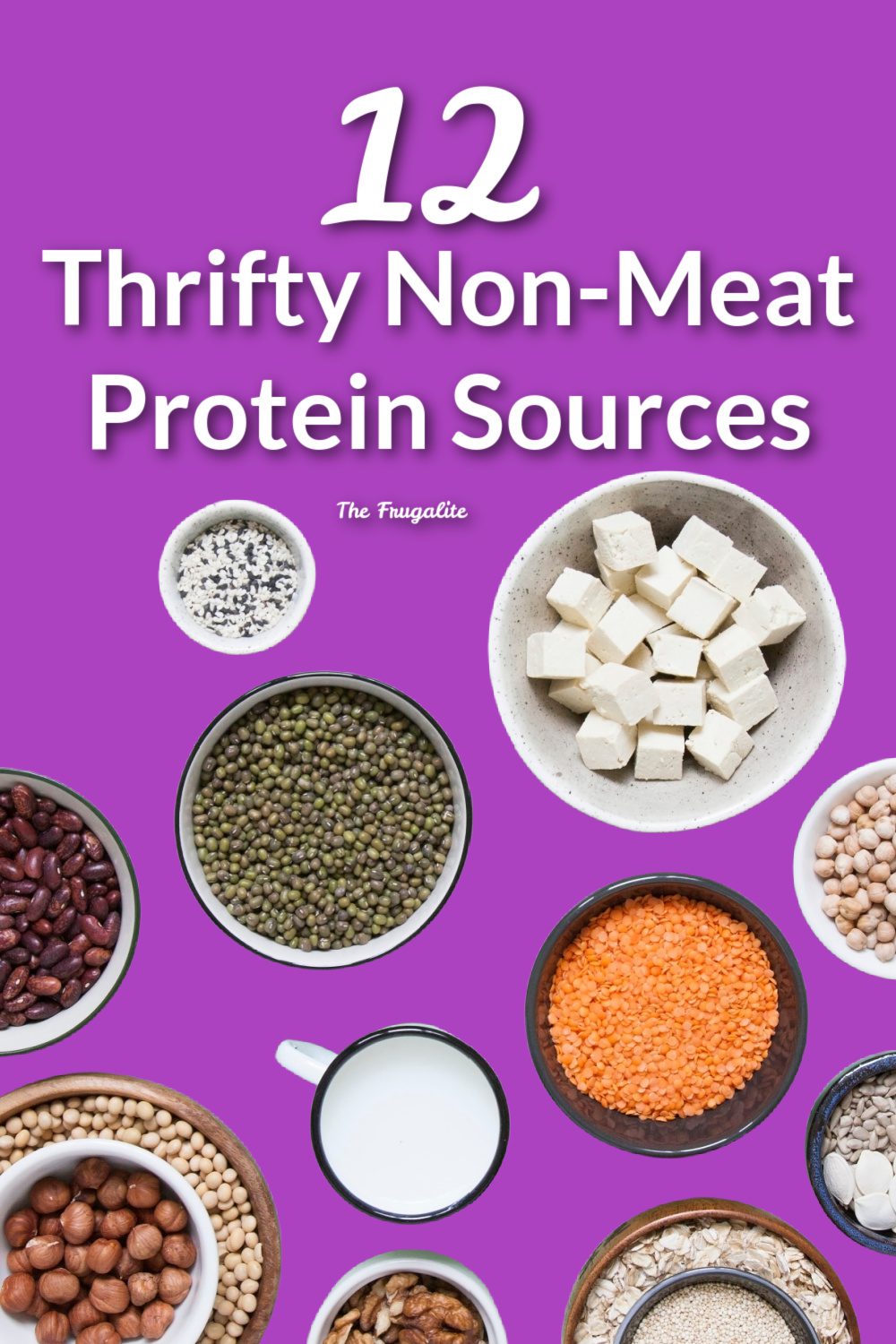

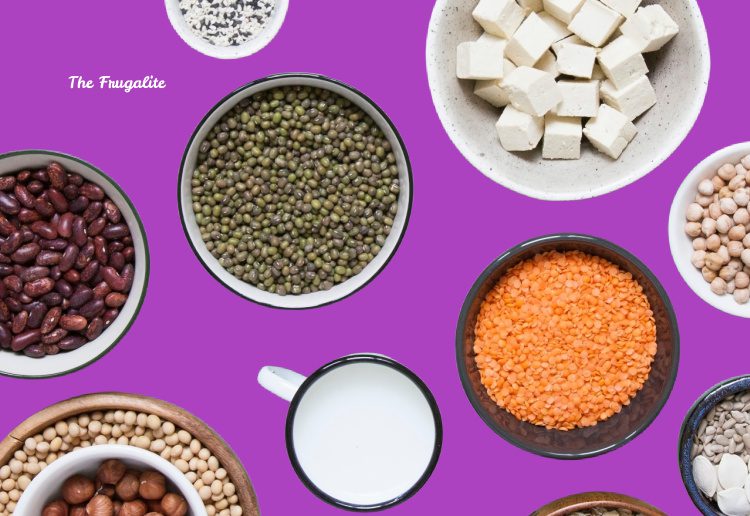


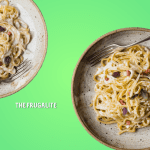


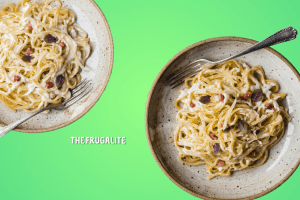
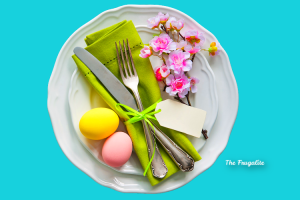


3 thoughts on “12 Thrifty Non-Meat Protein Sources”
I love this! However I think your black eyed peas numbers are off – they contain about 13 grams per cup cooked. They might have 40 grams of protein in the dry state but that would make a whole lotta blackeyed pea goodness. That said, great article and fun ideas!
Thanks for pointing that out! I’ve seen a range of numbers; WebMD says 7 grams, other sites say 13, and yes, some say 40. Go figure! And eat hearty, Frugalite-style.
Good suggestions. There are, however, some medical conditions that require that people to eat meat to stay healthy. In those instances looking for alternative sources for meat and creative ways to stretch the meat is necessary. Maybe raising quail, meat rabbits, meat chickens buying, or even buying a half side of beef, then learning depression Era cooking techniques to stretch what you have (many incorporate your non-meat suggestions).